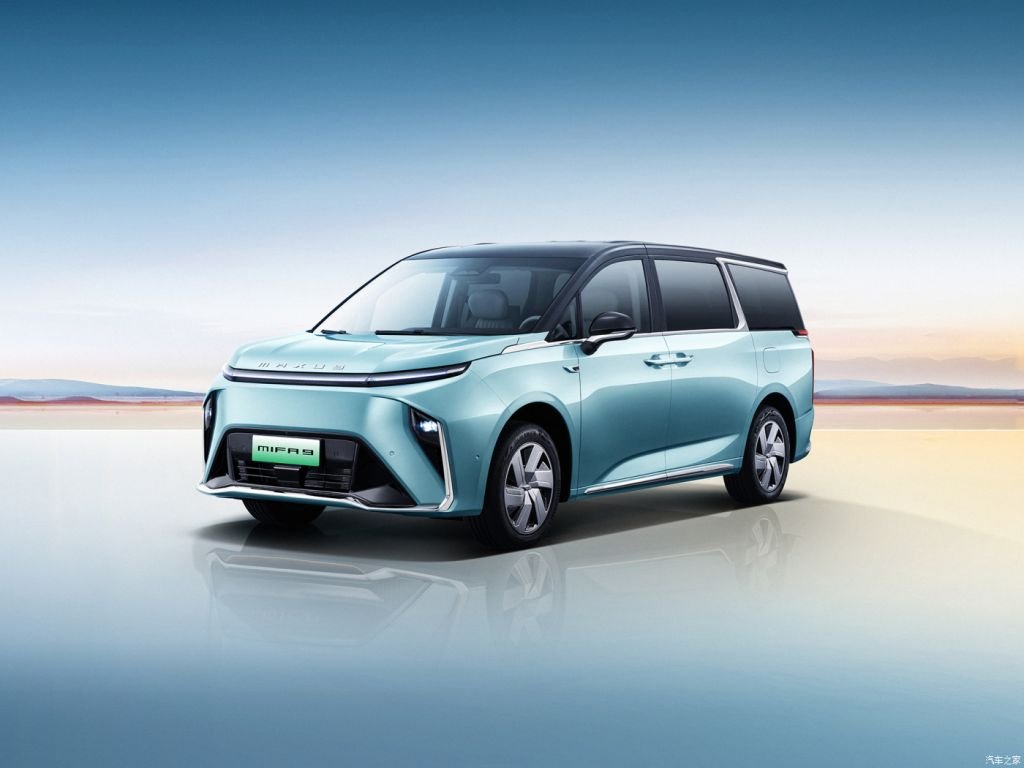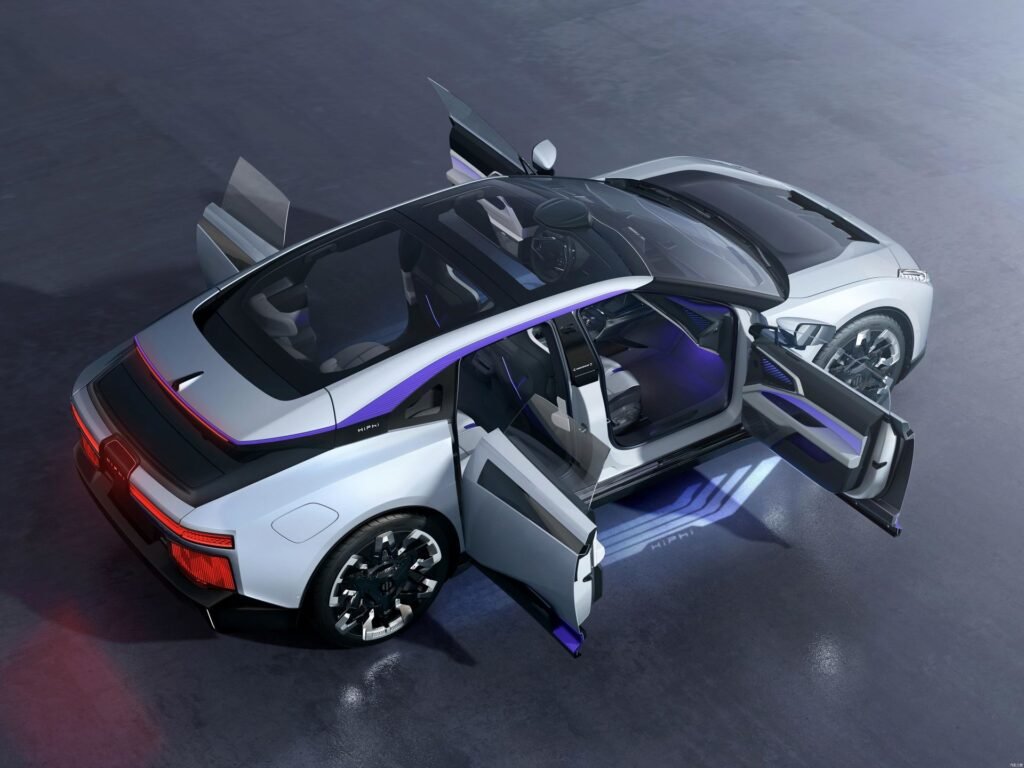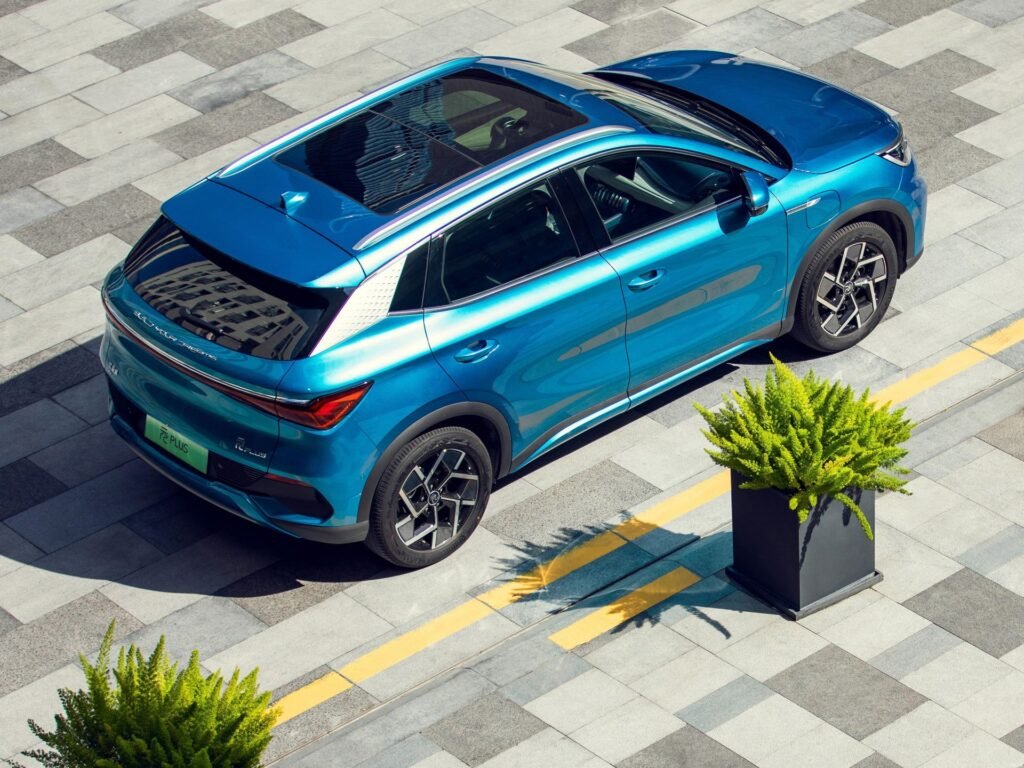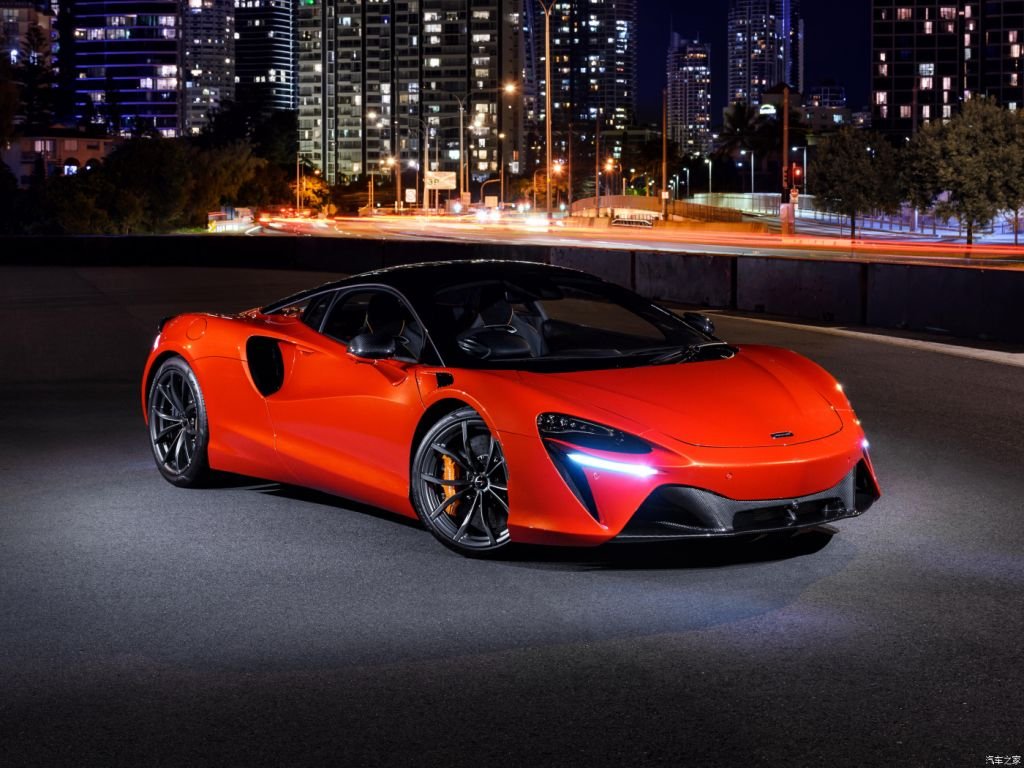With the development of the electric vehicle industry, “range” has always been the biggest headache for many electric vehicle owners and prospective owners.
Anyone who owns an electric car or has experienced an electric car must be particularly concerned about the remaining battery life (the number of miles that can be traveled) when driving.
When the power is less than half or not much left, some owners will not be able to step on the gas, not to turn on the air conditioning, this behavior is mileage anxiety.
Today, all electric car companies have not completely solved the problem of mileage anxiety, even the best Tesla, but also can not let people feel at ease to run long distances at will.
It is estimated that many people who have just bought an electric car or are about to buy one are also confused about this issue. So today we will talk to you about which factors are restricting the range of electric cars.
Table of Contents
ToggleAll out of working conditions of the range is a rogue
The concept of comprehensive working conditions for the electric car range of the factors that affect it? What exactly is the impact of the current electric vehicle range breakthrough bottleneck?
Before the specific discussion, first of all, we must understand that the electric vehicle range is not an absolute value. If you care about EVs, you will notice that most of the manufacturers will indicate “range under NEDC xxxkm” and “cruising speed xxx kilometers” in their publicity.
Why would a car have two different ranges? In fact, this is because of the different test conditions.
NEDC is the abbreviation of New European Driving Cycle, which includes different starting and stopping, acceleration and deceleration conditions. The figure tested under NEDC will definitely be smaller than that under 60km iso-cruise, but it will be closer to the real road conditions of city driving.
EPA stands for Environmental Protection Agency, and EVs that come to market in North America will adopt EPA standards. EPA’s working conditions simulate city congestion, highway, and cold weather, and are the most reflective of real-world mileage. So in general, the range figures under EPA are smaller than NEDC, i.e. EPA < NEDC < Equal Cruise.
This is like saying that a marathon champion’s “range” is 42 kilometers, but if you let him run while hurdling, it is estimated that it is difficult for him to finish 5 kilometers.
China’s EV range certification mainly refers to Europe’s NEDC standards and test cycles, and most Chinese car companies will mark the range under NEDC.
Therefore, all the range from the working conditions are rogue.
The choice of range is actually the result of a game of balance of various factors
Under the premise of the same working conditions, the factors that determine the range of the car itself are also intricate and complex, and these complex relationships can be summarized in one word: Balance.
How much range is a head?
From the 145km of GM EV1 in the 90s, to the 271km of BMW i3, to the 320km of Rongwei ERX5 and the 500+ of Tesla, in the end, how much range is a head?
I think we need to go back to the term “mileage anxiety” to discuss. One of the reasons why EV owners have mileage anxiety is that they need to spend time and mileage to find a charging station in case of power emergency, and they need to spend more time and cost to charge the car after finding a charging station.
Assuming that one day, the mileage of the electric car will be stuck at NEDC 500km, but at that time, there are more charging stations than gas stations, as long as the parking will have a small charging station can be charged, at this time, the use of electric cars will be closer to the cell phone. Currently, most cell phones are charged once a day, and the reason why users are less anxious is that there are a lot of charging resources: you can charge when you drive, you can charge when you go to the office, and you can charge when you’re outdoors, so you have charging pouches for emergencies.
There is also a situation, the driving range of the electric car is still stuck in the NEDC 500km, but the charging speed and now refueling as fast, this situation is very similar to the feeling of the electric car and gasoline cars, power or no power to drive hard, anyway, charging fast, after charging is a good man, but the probability of such a situation is very small, because it will be on the charging and battery technology requirements are very high.
Maybe there is a possibility that the charging speed has been due to R & D stagnation; infrastructure support and other reasons, no speed, but the range has reached NEDC 1000km, perhaps this is also a solution to the mileage anxiety program, if you take this program, even if you just run 50km a day, it is also necessary to carry a large battery to do a lot of extra useless work, is an extreme waste.
The results of user research show that: poor charging experience, poor supporting facilities and charging time, is the pressure on the consumer three mountains.
The biggest problem is the lack of home charging stations and poor public charging stations. So what are consumers’ requirements for a “qualified” electric vehicle?
85% of consumers want an electric car with a range of 300km or even 400km or more. So, under certain technical constraints, consumers have to choose between range and charging efficiency, what will they choose?
The final choice is polarized.
Long range, long charging time and short range, short charging time stand out.
A portion of consumers are willing to accept longer charging time to get longer range and reduce the frequency of charging; while another portion of consumers believe that fast charging and relatively close to the gas station type of experience is more important, in which case the range can be compromised.
“Three-electricity”‘s impact on range
For electric vehicles, the core of electric vehicle technology is the three electric technologies.
Electric vehicle “three electric” refers to: battery, motor, electronic control, “three electric” technology is also a new technology that differentiates electric vehicles from traditional cars.
These three technologies will have a direct impact on the driving range of electric vehicles on a single charge, the production cost of the car, and so on. Next, let’s explore the main impact of the three electric vehicle technology on new energy electric vehicles.
Electric vehicle batteries are divided into two categories, storage batteries and fuel cells. Electric vehicle motor refers to the vehicle power supply as the power motor, according to the type of working power can be divided into DC motor and AC motor. The electric vehicle electronic control system is the brain of the electric vehicle and consists of various subsystems, each of which is generally composed of sensors, signal processing circuits, electronic control units, control strategies, actuators, self-diagnostic circuits and indicator lights.
Influence of Battery on Range
Whether it is an electric car or a four-wheel drive vehicle, as long as it is driven by electricity to the carrier, all follow a reason: other conditions remain unchanged, the higher the capacity of the battery, the longer the single range naturally. Batteries for electric vehicles are like the fuel tank of a traditional fuel car. The larger the tank, the more fuel it holds, the further it naturally goes.
Then some friends may feel strange, since the battery is a “more the better” thing, why not plug in twice as many batteries? In this way, the vehicle’s driving range will also double, right? Theoretically, this idea is feasible, but in reality there is a “reasonable value” for everything, and the same is true for batteries.
The easiest and most violent way to increase range is to put in more batteries. Tesla’s first family car, the Model S, has a wheelbase of 2960mm and a width of 1964mm (the size of a D-segment car), part of the reason for which can be simply understood as “stuffing” more batteries.
Take Zhidou D2, JAC iev7 and Tesla Model S for example, their lengths are 2809mm, 4320mm and 4970mm respectively.
If thickness and width are ignored for the moment, the length of the car represents their battery loading capacity. So in general terms, Zhidou D2 has a range of only 155 kilometers, JAC iev7 has a range of 280 kilometers, while the Tesla Model S (75D) has a range of 469 kilometers, which is also positively correlated with the length and dimensions of the car listed above.
If the dimensions had been larger, beyond the D-segment, the target audience would have been drastically smaller, and beyond the traditional aesthetics of the car.
NIO’s first car is a 7-seat SUV, the wheelbase is more than 3 meters, in fact, in catering to the needs of families with 7 seats at the same time, “stuffed” more batteries to get a fairly good range, I think it should also be one of the factors to consider.
From the point of view of space, the current market sales of electric vehicles have been basically in their respective vehicle size as much as possible to install the battery to ensure that the vehicle’s range and vehicle size in a balanced range.
In addition to volume, weight is also an important reason for battery capacity constraints. This is why power battery manufacturers are now stepping up their research into batteries with higher energy density ratios.
When car companies in the battery to leave enough “space”, can start from the battery itself for technology iteration. In the case of the battery size remains unchanged, by improving the energy density of the battery to increase the range. But at this time it is necessary to introduce a “cost” dimension.
The more batteries, the higher the battery energy density, also represents the higher cost. And the embarrassing thing is, even if you use the highest energy density batteries, not only can’t the range of the electric car is comparable to gasoline cars, it will also make the manufacturing cost of the electric car is so high that consumers can’t afford the level. So it’s a balancing act between size placement, additional range advancement, and cost.
Battery is like the fuel tank volume of the fuel car, high-capacity fuel tank relative range should be longer, so the capacity of the power battery is to determine the range of new energy vehicles is one of the most important aspects of the new energy vehicle, currently placed on the market in the new energy vehicles Tesla is considered a leader in the P100D models of the battery capacity of 100kwh, the nominal NEDC range is 613km, actual range The actual range may be scaled down a bit on this basis.
The actual range may be reduced a bit on this basis, because the increase in energy density also means that the battery capacity has been increased under the condition that the volume and weight remain unchanged.
However, the higher the energy density, it also means the higher the cost of the battery. So under the constraints of these three conditions, electric vehicle engineers can only as far as possible according to the vehicle positioning to find a balance between the three. Only in this way can the vehicle’s range, body size and selling price be within the acceptance range of consumers.
Impact of BMS on electric vehicle range
In addition to the performance and quality of the battery itself, BMS is also an important factor affecting the range of electric vehicles.
BMS is Battery Management System, which is responsible for the safety monitoring and effective management of the power battery of an electric vehicle, so that the power battery can work in the best condition, improve the efficiency and reliability of the power battery and extend its service life. the efficiency of the BMS will also greatly affect the range.
Battery management system (that is, the electronic control system of the most important three electric systems in new energy vehicles) is mainly responsible for real-time monitoring of battery physical parameters; battery status estimation; online diagnosis and early warning; charging, discharging and pre-charging control; equalization management and thermal management.
This system is somewhat similar to vehicle OBD and engine ECU control, control engine fuel injection and vehicle electronic system operation, Tesla’s most core module is also the battery management system that is ahead of its time, able to clearly identify the battery capacity/charging and discharging management, so Tesla’s apparent range course credibility is still high, which is a new energy automobile manufacturers are a new energy vehicle manufacturers to be advanced in the field. This is an area to be advanced for many new energy vehicle manufacturers.
Simply put, the work of BMS includes: preventing EVs from overcharging and overdischarging, controlling the temperature of the power battery pack, controlling the charge balance of the power battery pack, monitoring the abnormalities of the battery pack, and evaluating the remaining power of the power battery pack. The main factor that affects the range of electric vehicles is the “battery temperature”.
The discharge efficiency of electric vehicle power battery is affected by the ambient temperature. Too low or too high temperature will make the power battery discharge incomplete, which will directly affect the range.
Therefore, an excellent BMS can not only detect the current operating temperature of the battery at any time, but also adjust the temperature of the battery according to the need, so that the power battery pack has been in a more suitable working temperature, as far as possible to achieve the optimal discharge efficiency.
For example, the same 200kw single motor can achieve 100km acceleration in 7 seconds, can also achieve 100km acceleration in 15 seconds, as long as it does not exceed its theoretical limit value, these parameters can be controlled through the electronic control logic.
Impact of electric motors on electric vehicle range
As a tool for converting energy (fuel) into power, an electric motor in an electric vehicle is roughly equivalent to an engine in a conventional fuel vehicle. Many people think that the electric motor is just a tool to drive the vehicle, and it only affects the vehicle’s performance indicators such as speed and ultimate speed, and has nothing to do with the range.
But in general, the power of the motor should be negatively correlated with the range of the vehicle. It’s as if the same two batteries that work for years on end in an electronic clock can be put into a four-wheel-drive vehicle and run out of juice in a few hours.
Electric car manufacturers face the same problem when developing an electric car. If a 500kW motor is used, the vehicle’s performance index will naturally be unchallenged, but the range will probably be affected; however, if a small 150kW motor is used, the range will definitely be improved, only that accelerating from a standstill to 100km/h will probably take about 10 seconds. So, how to match a suitable motor to the target customers of the current model is a question that every EV manufacturer needs to think about.
The electric motor, in a sense, replaces the engine in a gasoline car. So the number of motors (single or dual) and their power determine how “powerful” the car is.
How does a manufacturer choose between “powerful” and “long-lasting”? For example, if a manufacturer has two motors to choose from, the power is 150kw, 300kw respectively:
If you choose a single motor 150kw, it’s like hanging out after dinner, NEDC can reach 500km range, but 100km acceleration to 10 seconds away.
If you choose front and rear dual 300kw motors. Then the 100km acceleration will be fierce flying, can enter the 3 seconds club, but the range under NEDC may only be 400km.
At this point, the manufacturer needs to make a balance between “fierce” and “long-lasting” to make the target consumer’s favorite.
If the target consumer is to play 0-100 acceleration. Then there is no doubt that the choice of dual-motor 300kw.
If the target consumer group is commuting to work. Then of course you can single motor 150kw;
If the target consumer group is the high-end income group, then this choice needs the product planning department of the manufacturer to make a good investigation, in order to support the price of hitting the target consumer group, there is a need to have quite a fierce power, at least with the M series, AMG, RS a battle, and at the same time need to take into account a good range, enough for them to commute to work, at this time perhaps the front 150kw, rear 300kw, 100 kilometers acceleration of 5 seconds, is a more perfect choice. This is a perfect choice.
If your target audience likes to drive aggressively, then the appropriate sacrifice of range to meet their needs is obviously more cost-effective; but if they prefer a single range of 500 kilometers, weekly commuting only need to be charged once a long range of products, appropriate reduction of the motor power can also help the vehicle to extend the range.
Of course, consumers’ own driving habits directly determine the daily working power of the motor, so if you want your electric car to have a longer range, maintaining a good driving habit and avoiding prolonged and intense driving is the most effective way.
Conclusion
In fact, in addition to the battery, electronic control, motor, in addition, there are many more subtle factors affecting the length of the range, but due to the impact of the magnitude is too small to go into detail.
All in all, while range is definitely one of the most important criteria when designing and building an electric car, it is not the only one. In addition to range, an excellent automotive product also needs to focus on many other aspects, such as comfort, luxury, safety and so on. So, whether it is for the range itself, or for the comprehensive dimensions of a car, automotive engineers are more likely to seek a balance among these different conditions. In the case of ensuring that all aspects of the vehicle are not problematic, as far as possible to meet the consumer’s demand for range.
In other words, if you don’t care about anything and just build an electric car that can run a long way, can you build it? Definitely, but the car may not look like the car in everyone’s mind. For example, its size is as big as a tank, there is no seat in it except a driver’s seat, no air conditioning, audio, and maybe not even seat belts, and there is no comfort to speak of when driving, and the only thing that makes people satisfied is that it has a long range of 2,000 kilometers. Wouldn’t you love it if there was such a super-long range electric car?
We believe that with the popularization of electric vehicles, the charging station layout, charging speed and the NEDC range score of the car itself is a spiral growth, the three will be different frequencies, different slopes in the growth, but in the end, the three will find a better fit, so as to solve the plague of mileage anxiety.
Perhaps, in the future, electric car range is longer than fuel cars, acceleration is faster than fuel cars, charging is cheaper and more convenient than refueling, and if there really is such a day, electric cars can stand on the world stage and proudly say: “Welcome to the electric era”!




